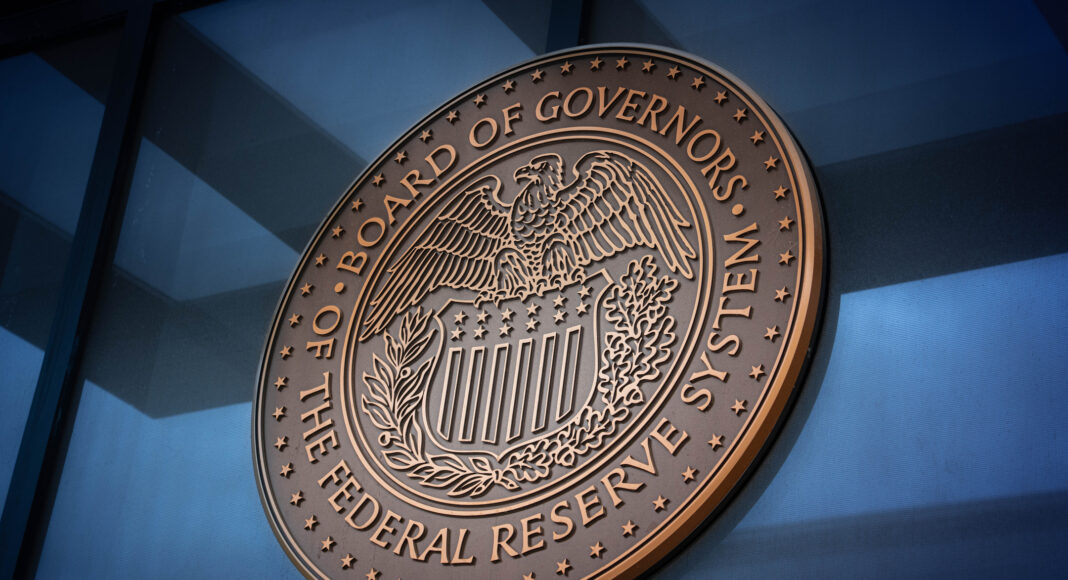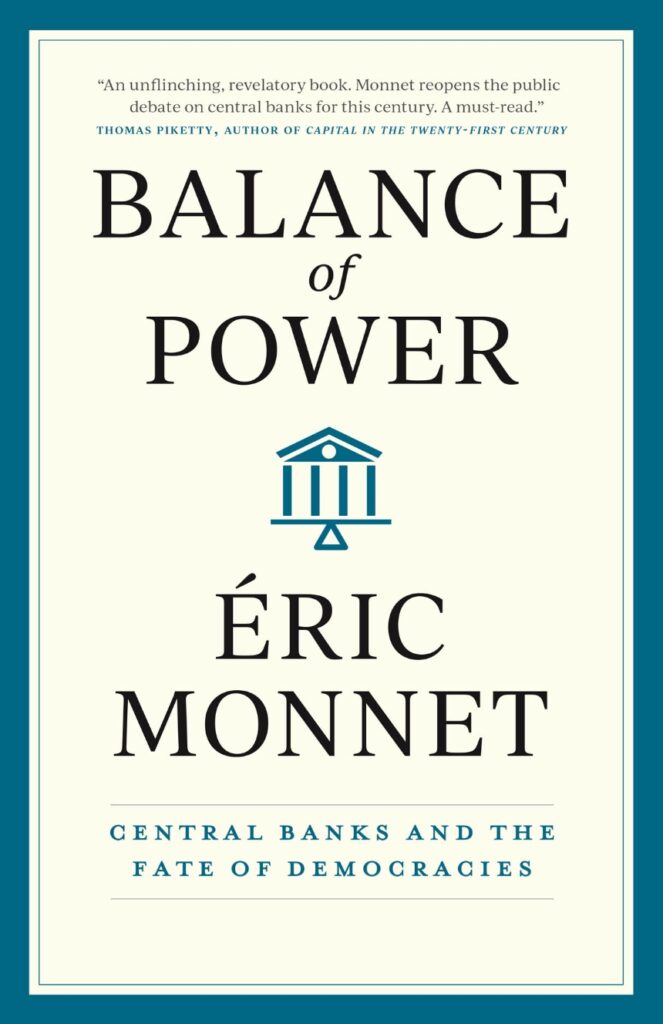The following is an excerpt from the book, Balance of Power: Central Banks and the Fate of Democracies, by Éric Monnet.
Central banks’ role as de facto insurance providers to financial markets and states, in principle for the benefit of the population, gives them a special place in the state apparatus and the economy. However, this should not give them undue leeway without checks and balances. As an institution serving the public good, the central bank must be subject to democratic debate and institutional balance of power—not as a purely technical manager dealing with matters isolated from the rest of economic and social policy.
The point is not to question the independence of central banks—that is, the principles according to which they make their decisions without instructions from the government. Indeed, such independent administrative authorities are a legitimate component of modern democracies, and they are part of the balance of powers. Democracies are a system of checks and balances, not
the unlimited power of the parliamentary majority. Moreover, the autonomy of the central bank can be seen as essential for its ability to come to the aid of the state, if need be, when the government fails to do so. The history of central banks shows that such independence has always been one of their defining characteristics, albeit to differing degrees. Central banks’ very existence is justified by the fact that people believe that money is more efficiently man-
aged by an institution that is separate from a Treasury department or ministry of finance.
Even so, the values that justify this independence (imperatives such as reflexivity, accountability, impartiality, and transparency) require strengthening if they are to be adapted to the central banks’ current activities. Independence does not mean that there is no consultation or coordination with other policies or democratic structures; that is what has been too long forgotten.
It is possible, in other words, to accept the protective role of the central bank while also updating the terms of its independence. In fact, it is all the more necessary because—like other public administrations since the turn toward economic liberalism in the 1980s—the policy of the central banks has deviated in recent decades from the principles of the welfare state (i.e., maximizing the welfare of the public) that once characterized it. This has produced disastrous consequences for the economy, including financial instability and the proliferation of inequalities. The last decades have seen many central bankers more preoccupied with giving lectures on the liberalization of the labor market or the privatization of retirement plans than with sticking to the objectives of financial stability or targeting inflation.
The central banks, as we see them today (that is, as public institutions that are not subordinated to the goal of increasing private shareholders’ profits), were largely created after World War II. Central banks have a long history, but they were profoundly reformed in the middle of the twentieth century, at the same time as the policies that made up the welfare state and with similar objectives. (The United States is to a certain extent an exception in this regard, to which I shall return.) They are no longer controlled by private shareholders, and their money creation is no longer limited by gold reserve laws. They were quickly integrated into the state apparatus and into a set of macroeconomic policies that had not existed earlier in their history. Starting in the 1980s, the strengthening of central bank independence relative to governments reduced the range of the central banks’ activities. This has not, however, led to a questioning of the fact that they should be under parliamentary oversight, independent of private interest, and in charge of macroeconomic policy on behalf of the common good. There has been no return to the principles of central banking that prevailed before World War II. Yet the definition of central bank independence formulated at the end of the twentieth century was not well equipped to address the new economic and democratic challenges of the early twenty-first century. We are left with an unsustainable gap between what central banks actually do and the institutional framework that defines their responsibility.
The macroeconomic principles on which central banks and the welfare state were conceived were the same: countercyclical policies intended to protect individuals from economic risk (including price and financial instability) and reduce overall uncertainty. But these historical and conceptual links between central banks and the welfare state are rarely made explicit. Drawing attention to them does not mean to suggest that we should ask the central bank to pay for welfare benefits. The point is to recognize that, like other pillars of the welfare state in capitalist societies, the central bank performs a function of managing risks and reducing uncertainty. Just as the risks evolve, so too must the institutions. As the twentieth-century economic anthropologist Karl Polanyi said, the central bank’s policy is always a form of interventionism that evolves over time in accord with the nature of the state. It reflects the choices made regarding distribution and power in society.
This necessity of institutional evolution is why many central banks (including the European Central Bank, contrary to what is often claimed) have in their mandate not only an objective of price stability but also the objectives of full employment, social welfare, and even environmental protection. These objectives involve protecting the economy against the failures of banks and financial markets and, in some cases, providing an alternative to them. The result is a long-term management and insurance function over any given time horizon, one that includes the objective of a stable currency (represented by the inflation rate or the exchange rate depending on the country) but, most of the time, is not limited to it.
The insurance function may be less obvious, but it is all the more important today for the management of public debt and the ecological transition. It is based on a dynamic view of the insurance function of the welfare state: investing and regulating today in order to avoid paying compensation tomorrow. The importance of long-term thinking for monetary policy has often been considered by economists in the context of price stability, but this traditional objective cannot be separated in practice from other social and economic objectives. Central banks need to be concerned about anything that might affect what they are responsible for: the value of money.
Finally, examining the political and economic identities of the central bank also implies carefully defining its scope of actions. We must guard against the undemocratic temptation to entrust
control of the whole political economy to the power of creating money. Monetary policy must reduce uncertainty and support other economic and social policies with an eye toward coordinating them—not substituting itself for them. The first part of this book emphasizes these distinctions, which are important for democratic equilibrium, and the necessity of not equating the central bank with a public investment bank or the ministry of finance.
Articles represent the opinions of their writers, not necessarily those of ProMarket, the University of Chicago, the Booth School of Business, or its faculty.
Reprinted with permission from Balance of Power: Central Banks and the Fate of
Democracy by Éric Monnet, published by the University of Chicago Press. © 2024
by The University of Chicago. All rights reserved








